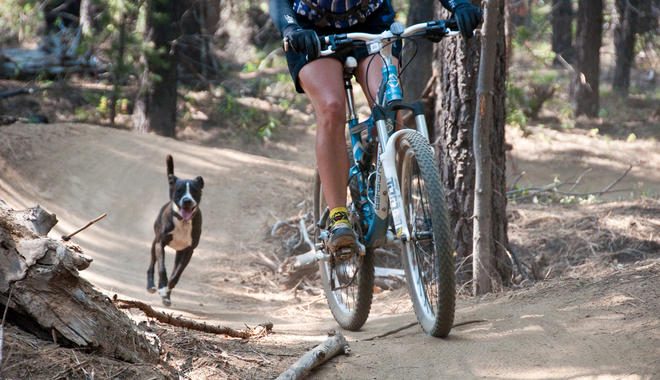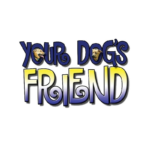 Chasing
Chasing
Dogs that chase are exhibiting a perfectly natural behavior. They are not being aggressive; they are simply satisfying their prey drive. Different dogs may respond to different triggers, though – joggers, bicyclists, cars, children running, fast-moving animals, including other dogs, cats, and one of their favorites, squirrels.
High Prey Drives
Although all dogs have a prey drive, some breeds are hardwired to chase anything that moves. They needed a higher prey drive to do their jobs; herding, hunting, or killing vermin. If your dog has an extremely high prey drive, it’s likely that you will only be able to manage the situation. Do your best to keep your dog from practicing the behavior. This means that you would not leave your dog outside where he would have freedom, for example, to chase mice or reach a high state of arousal running the fence.
You should also stay away from dog parks or other off-leash play areas where there may be smaller dogs. Some dogs will revert to a state, called Predatory Drift, where their instincts take over. They may stalk, chase, and shake a smaller dog, just as they would if chasing and killing prey. This isn’t something you want to take a chance with. Unless you are in a controlled class setting, avoid off-leash activities where smaller dogs are around.
Managing Your Dog’s Prey Drive
Most trainers agree that you should try to satisfy a dog’s prey drive through other acceptable activities. Try some sports, like Treibball or Disc Dog, or play at home throwing a Frisbee or ball, blowing bubbles (yes, like we had as children), “casting” a Flirt Pole, a dog exercise toy with a fleece toss lure (kind of like a fishing pole), or moving around a Chase ‘N Pull, a flexible rod with a sheepskin piece on the end. As with any game, you should teach your dog a cue for starting and another for stopping play, so that your dog starts associating those words with permission to chase something that you have decided is acceptable.
On walks, try to divert your dog’s attention to a rubber toy. Squeaking a toy may get your dog’s attention long enough to break his fixation on whatever is moving. Toss the toy away from what your dog wants to chase. Use the “cue” that you have practiced at home. Some dogs will get addicted to one toy and then chase that toy, rather than a car or squirrel.
Focusing Your Dog’s Attention
Chasing is a self-reinforcing behavior. It’s fun, and sometimes your dog even catches something. Once your dog is focused on what he is chasing, it can be nearly impossible to get him back. So, try to distract your dog before he sees the squirrel or, if not, when he has just noticed the squirrel. Call your dog’s name or use a squeaky toy to get your dog’s attention. Move backwards quickly, and when your dog follows, play a targeting game (if your dog loves targeting) or give him one small treat after another. Otherwise, the temptation and the reward are just too great.
On your daily walks, change your pace from a slow saunter to a fast walk and every pace in between, rotate in different directions, take detours around obstacles, make sudden turns, and do whatever else makes your walks unpredictable. Since your dog won’t know what you are going to do next, he will need to pay attention or be left behind. Your dog won’t have time to notice what’s out there.
Positive training classes can teach your dog alternative behaviors and impulse control. In class, you will learn Watch Me, Leave It, targeting (“Touch”), and coming when called. Practice them a lot first without distractions, then with increasing distractions, so that these skills will work when you need them.
Key Points to Remember
- Dogs chase people, animals, or things that move quickly because of their natural prey drive. Some dogs have a higher prey drive for the job they were bred to do. It’s not about dominance or aggression.
- Chasing is a self-rewarding behavior. It’s fun for your dog, and he may even catch something.
- Don’t leave your dog unsupervised in the yard, or take him to an off-leash play area around smaller dogs (or the neighbor’s cat).
- Don’t let children run around dogs. Even when dogs chase in play, it can be frightening to children. Dogs that are born to chase are returned to shelters for “not getting along with children”, even though that behavior could have been predicted and prevented.
- On walks, try to distract your dog before he has a chance to notice and chase squirrels, bicycles, and joggers . Positive training classes can teach you skills that can help, while being unpredictable on walks can focus your dog’s attention on you, instead of what’s out there.
- Many trainers recommend playing with toys or doing sports that can satisfy your dog’s need to chase.
Resources
Chase!: Managing Your Dog’s Predatory Instincts (Dogwise Training Manual), Clarissa von Reinhardt
Hunting Together: Harnessing Predatory Chasing in Family Dogs through Motivation-Based Training,
Simone Mueller
Still Need Help?
Contact Your Dog’s Friend at [email protected] or (301)983-5913 for advice and referrals or check out our list of recommended trainers and behaviorists.
Your Dog’s Friend is a nonprofit 501(c)(3) organization working to improve dogs’ lives, reduce problem behaviors, and keep dogs out of shelters, by educating and supporting their humans.
This material is not intended to be a substitute for professional help when dealing with dogs with intense or potentially dangerous behavior issues. Consult a positive reinforcement trainer or veterinary behaviorist for professional assessment, guidance, and support.




